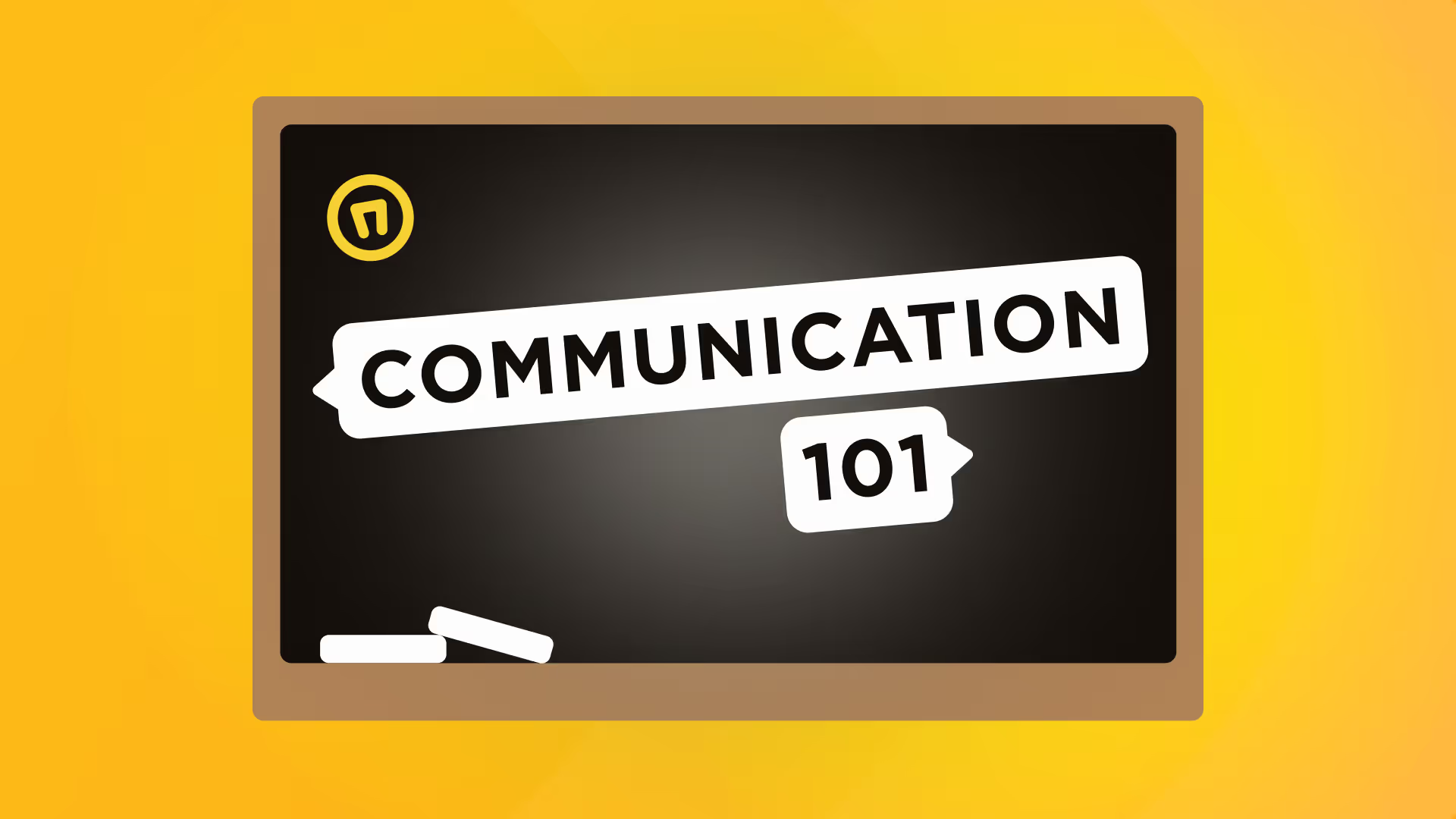Here's How to Communicate Better
You want to communicate better, but don't know how. In today's blog we're going to show you some new strategies to try when it comes to your communication at work.
Introduction
I want you to take a second and think about the last thing you said or wrote to a coworker. What was your intent? How was your message received? While we normally are focused on the technology that we work with, perhaps we should spend just as much time critically engaging our methods of communication.
As a marketer, I communicate frequently with people I will never meet. By having this immediate context removed, it has forced me to develop better communication methods. For example, I would argue that all communication is based in a simple statement. Change the reader’s mind.
Now, one can change someone’s mind in simple ways: turn in the report earlier, change the meeting agenda, add better protocols of intranet permissions. These are still changing a reader's mind and thus their actions.
At Bulb Digital, one of my roles is to help our team create content, and I love it! This blog is a bit more of a relaxed topic on the power of communication. I think it applies to everyone, but here are a few things that I have found helpful along the way.
Steal From Others to Get Ahead
To approach this change of mind, I suggest you start by gathering references and building a sense of the best ways to communicate. By pulling from shareholder letters, transcripts, or previous emails, what has stood out to you in the past? One of my favorite creative shifts happened when I read Austin Kleon’s book Steal Like an Artist. It’s a fun afternoon read filled with quotes and sketches applying the lens of where creativity comes from.

You can “steal” the best parts of these communications, combine them into something that applies to your situation, and edit them to bring out only the best. Creating this filter of what you believe acceptable is essential in better communication.
I’d like to encourage you to collect phrases for the next month in a notebook or in a loop.
All Your Messages Get Left On *Read
.avif)
Let’s go back to our first example, when you were communicating with your coworker, what was your intent? The best intent to have is changing a coworker’s mind, kindly. By getting them from an A to a B mindset we can help them be informed in their actions. Let’s think critically about the receiving of your communication. To state it simply, sent does not mean received. If you’re writing is confusing you could be getting in the way of the message. Be kind by being clear. Because changing someone’s mind is a difficult task the best way for this to be received is if it is in kindness.
This leans a bit into some of our key principles in using technology better, by leaving email behind and changing your messages from person to person and into channels.

SELF ASSESSMENT
Is your business getting full value from your M365 subscription?
Billions of dollars are wasted each year on underused subscriptions. Take 3 minutes to find out where your tools are driving results, and where they’re holding you back.
Find Out Now

Is Team Communication Holding You Back?
Find Out in Just 2 Minutes.
Take our quick scorecard to uncover communication gaps and hidden barriers within your team.
Your Really Terrible, No Good, Bad First Draft
Up until this point, we have largely avoided the format of the communication itself. This is because the majority of communication is in the non-verbals, the tone, and timing. All of which are removed in textual communication, and thus must be expressed in a way that can be read.
Now let’s get a bit, closer to the content by spending a second to try a few different ways of communicating where you can take a unique direction. Especially if you are trying to catch attention, change someone’s mind drastically...
A great phrase for this is “Say it straight to say it great” – Dan Nelken, Hey Whipple. The best attitude to have is that rewriting is the best way to get better communication.
Take Someone for a Loop
Finally, I want to introduce you to the idea of a loop. In communication, to keep people reading, you can open loops of information included later that can be closed only if someone keeps reading. By mapping out the communication, the mindset shift, and rewriting concisely and kindly, you have an exponentially larger possibility of communicating more effectively.
In this same page, keep track of how often you restructure your writing in a week. This is not a sign of bad writing. This is a sign of a better filter for bad communication.
Everybody Loves Scaffolding
I want to spend a bit of time on verbal communication. This is regarded as the most effective form of changing someone’s mind. You have a chance to truly interact with, handle objection, and appropriately assess when you have achieved your goal. This is a verbal and visual medium. All the principles from above apply and starting from an empathetic point allows you to perceive the “meeting within the meeting” Use structures to provide your conversation a direction. For one example, if I am trying to change someone’s mind by introducing a new pitch, I use Jared Belsky’s CRER method.
CRER: Context, Resources, Expectations, Resolution
Giving an agenda to a meeting, being flexible on it’s path, but inflexible on it’s outcome for a changed mind is the way to approach verbal communication.
Good Communication = Good Leadership

When I think of all leaders in organizations, they think critically about the tools they use, the things they say, and most importantly the impact they have. And that happens by taking your communication methods under the microscope. Good Communication is Good Leadership.
I learn this every day in working with our team at Bulb Digital and turning our thinking, helpful mindset shifts into videos and blog posts. We have worked on these techniques to apply them to exponentially larger groups to help make you successful.







.jpg)







